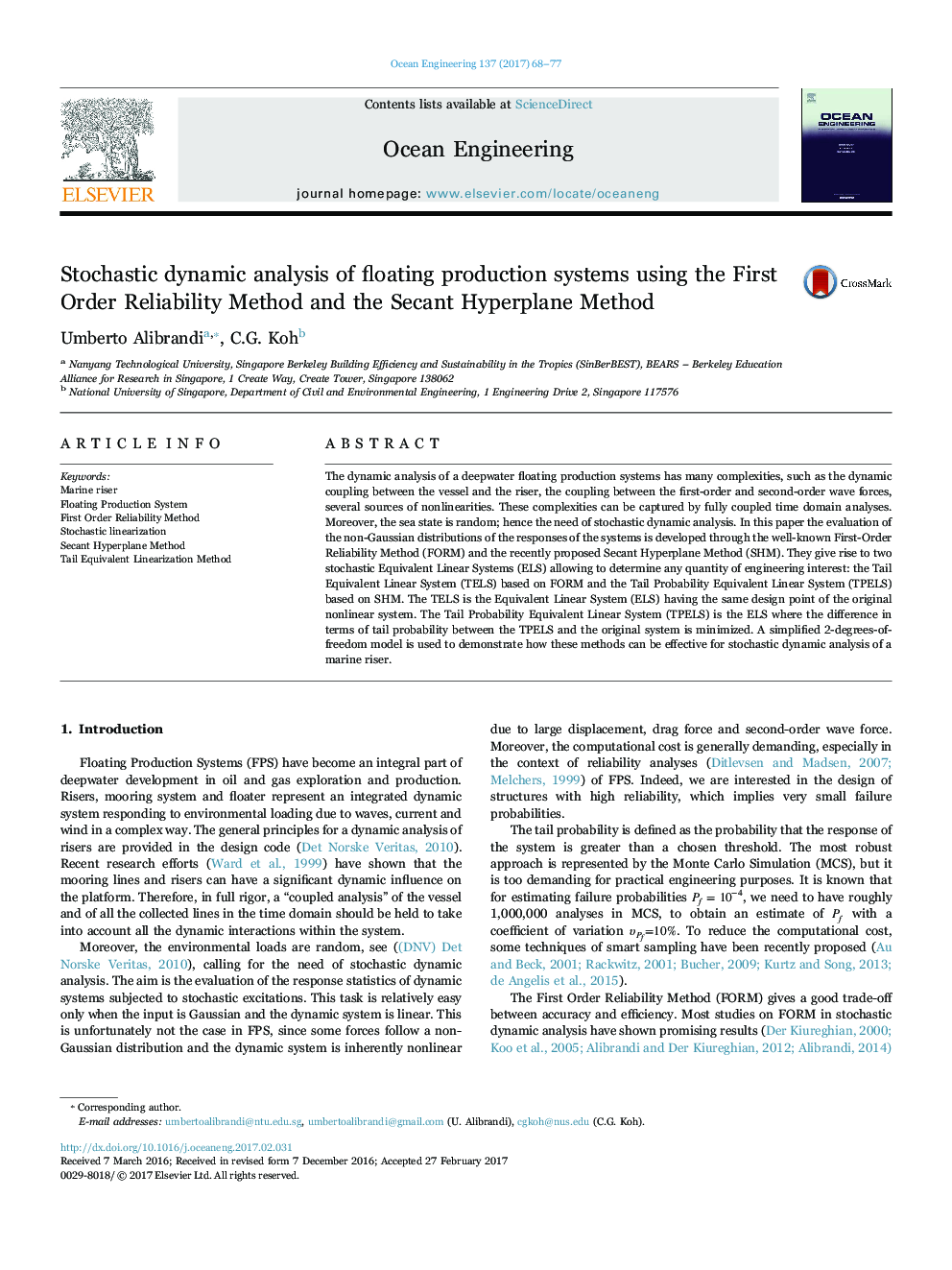| Article ID | Journal | Published Year | Pages | File Type |
|---|---|---|---|---|
| 5474236 | Ocean Engineering | 2017 | 10 Pages |
Abstract
The dynamic analysis of a deepwater floating production systems has many complexities, such as the dynamic coupling between the vessel and the riser, the coupling between the first-order and second-order wave forces, several sources of nonlinearities. These complexities can be captured by fully coupled time domain analyses. Moreover, the sea state is random; hence the need of stochastic dynamic analysis. In this paper the evaluation of the non-Gaussian distributions of the responses of the systems is developed through the well-known First-Order Reliability Method (FORM) and the recently proposed Secant Hyperplane Method (SHM). They give rise to two stochastic Equivalent Linear Systems (ELS) allowing to determine any quantity of engineering interest: the Tail Equivalent Linear System (TELS) based on FORM and the Tail Probability Equivalent Linear System (TPELS) based on SHM. The TELS is the Equivalent Linear System (ELS) having the same design point of the original nonlinear system. The Tail Probability Equivalent Linear System (TPELS) is the ELS where the difference in terms of tail probability between the TPELS and the original system is minimized. A simplified 2-degrees-of-freedom model is used to demonstrate how these methods can be effective for stochastic dynamic analysis of a marine riser.
Related Topics
Physical Sciences and Engineering
Engineering
Ocean Engineering
Authors
Umberto Alibrandi, C.G. Koh,
